Rebecca Appleby is an artist working across sculpture, ceramics, drawing and painting. Her work is a continual exploration of the tension between industry and nature as she examines: structure, order and control, alongside chaos, expression and destruction.
She trained in ceramics at Edinburgh College of Art though her work pushes the boundaries of traditional ceramics. She incorporates steel structures that not only support the clay but also compromises the clay as it shrinks and cracks around the steel. She also devises mark making techniques to respond to the surface of the clay much as she would approach a drawing or painting. Her aesthetic looks to effortlessly translate across all surfaces, be it paper, steel, clay or canvas.
Court Spencer caught up with her in her studio in Bretton that overlooks the Yorkshire Sculpture Park.
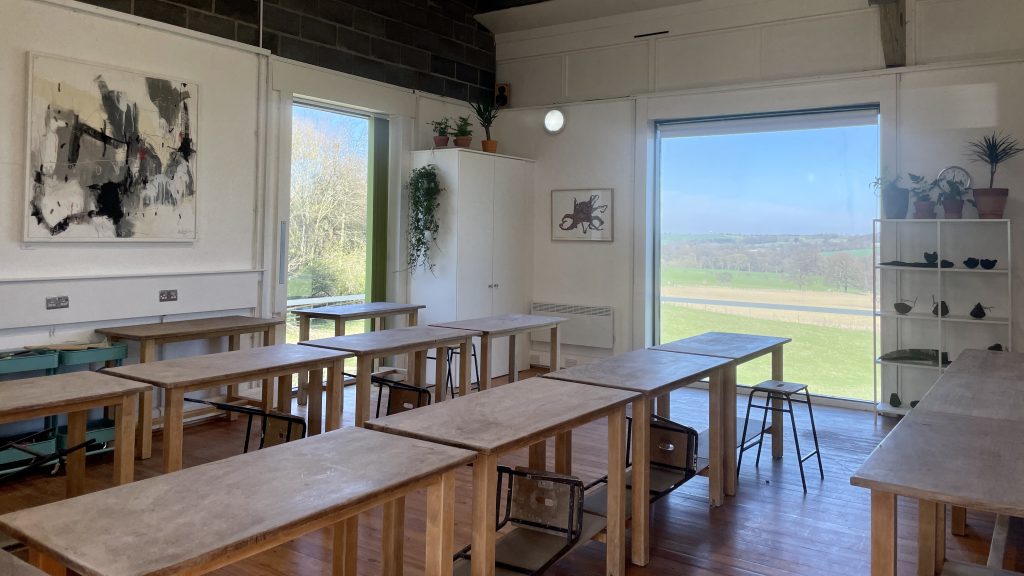
The workshop area overlooking Yorkshire Sculpture Park.
Court: Wow! This place is incredible! And look at that view! How long have you been here?
Rebecca: We moved from our studio in Holmfirth in December last year. We literally moved the contents of both our studios into the upstairs workspace and locked the door on it until the new year. There was no floor space left visible and the prospect of organising so much stuff was very daunting. Fortunately, we had a deadline of March when we ran our first five-day ceramics course so we had to be ready come what may! We took down false ceilings, built cupboards and kitchen dividers, sourced and installed all the furniture, installed lighting & kilns and painted both floors from top to bottom. Not a mean feat in 3 months but we hit our deadline and the course ran smoothly!
Court: Oh wow! You’ve got to love a deadline to motivate movement! Can you talk us through how you use the different spaces?
Rebecca: We have designated the upstairs as a classroom area. The light is beautiful, and the views are amazing. We both agreed if we were to permanently work upstairs, we would be far too distracted by the view of the YSP and resident highland cattle who graze in front of our window. The space lends itself to our five-day courses that we run 6 times a year. James and I have run courses together for over 7 years now and we are delighted that instead of referencing artists from a book we can now wander down to the YSP to see world class sculpture in person!
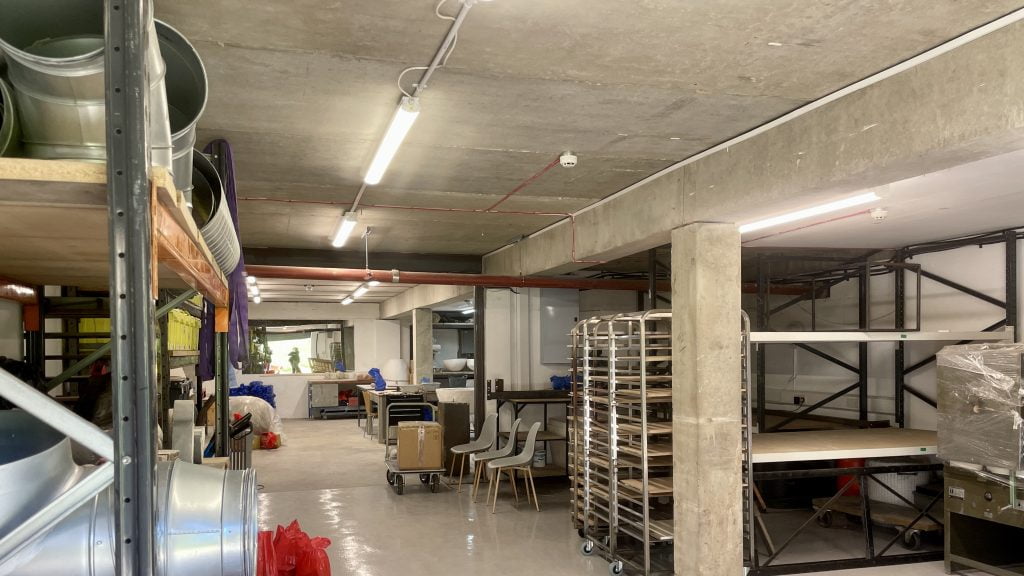
Downstairs studio space.
Court: Yeah, that’s pretty inspirational! With the new studio and the British Ceramic Biennial later this year, it feels like quite a pivotal point in your career.
Rebecca: Absolutely! 2023 is set to be pivotal and I consider the studio move to be transformative. I’m seeking specific and targeted opportunities as platforms I can build upon, reaching out to new audiences and creating networks for significant future development.
The opportunity to create work for Award gives me the chance to focus, orientate myself, articulate and structure changes without the financial pressure of making work to sell. The ethos of the British Ceramic Biennial (BCB) is about celebrating ground-breaking, progressive practice and allowing artists to challenge themselves and the ceramics status quo. The opportunity and platform of this prestigious exhibition will encourage me to take more creative risks – conceptually, theoretically and technically. I am making the best use of the opportunity by treading new ground, reaching new audiences and I hope to use the momentum of the exhibition to make a step change in my practice. It’s a rare opportunity to present my work to a critical and academic audience without a primary commercial focus.
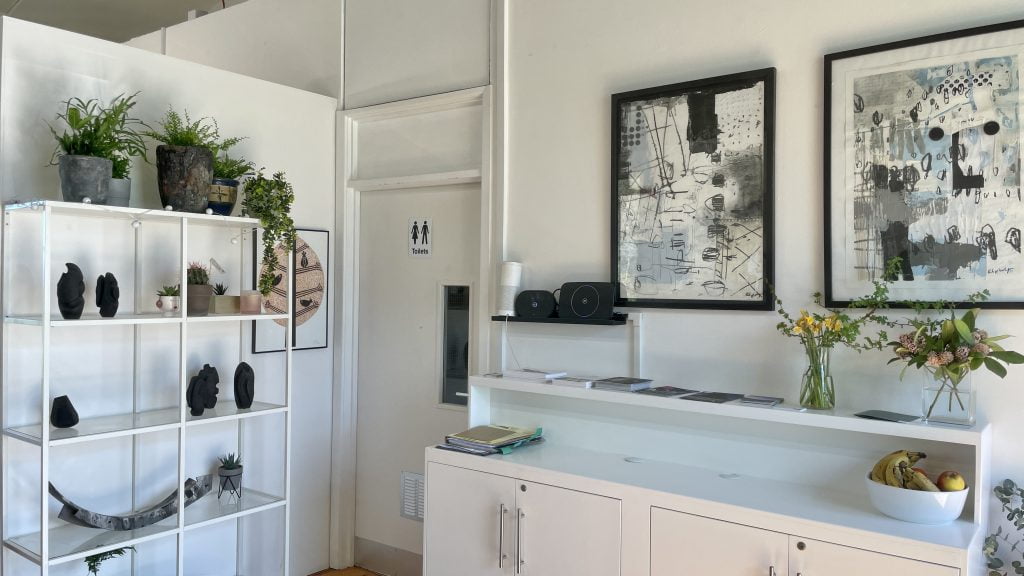
Entrance to the studio.
Court: It sounds like things are really coming together but that’s testament to a lot of continuous hard work over years. Was there a point in your life when you decided to really focus on being an artist?
Rebecca: Yes. When I graduated from Edinburgh College of Art in 2001 came back to Yorkshire where I got a job at my old college in Kirklees where I worked part time as a life drawing tutor and part time as a ceramic technician. Unfortunately working full-time left few hours to concentrate on a career as a practising artist, although I consistently made work but without real focus on exhibitions and galleries. Opportunities came my way, but I was not driven to seek out opportunities. In 2014 when personal circumstances allowed I left my career in education and set up full-time in the studio, determined to see if I could make it work as a full-time artist.
Court: You’re well known for your ceramics and sculptural works but you also draw and paint, and this feels like they feed into one another. Can you talk us through that?
Rebecca: Drawing and painting is integral to my process. It is a large part of my practise, and I often exhibit sculpture and painting alongside each other if I have the opportunity. It was only when I did my foundation course that my path was changed by my tutor at the time, David Roberts. He advised me to do my degree in ceramics as opposed to fine art or sculpture. This is a decision I have questioned recently as I ask, is my medium ceramics or can it be any material?
When starting a new body of work I will often sketch to investigate the fundamental design process, essentially shape and form. I will then experiment with surface and texture – sometimes this is an exercise in mark making and occasionally these will then develop into paintings. I work on a large scale on paper, board and canvas. It is interesting that throughout my career I have probably sold more paintings than I have ceramic sculpture. I worked for several years painting for an art gallery for their corporate clients so my painting can be found in offices, banks and hotels around the county!
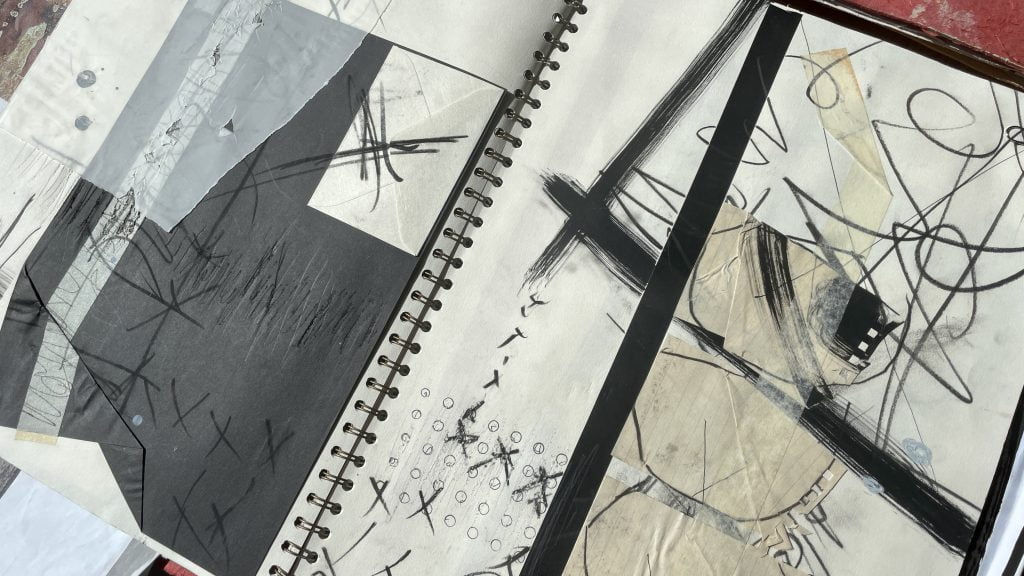
Sketch books in the studio.
Court: Your work takes on a variety of forms, but you’ve got a distinctive style across the mark making on surfaces. Is that something that is key to your work?
Rebecca: Yes, the marks I use are directly linked to the concept that underpins all my work. My practice examines the ever-present cohabitation and conflict between industry and nature.
Through a series of techniques developed over 20-years, my 2D and 3D works are strongly defined by a series of marks and surface contusions that mimic both the manufactured process of industry and the seemingly sporadic, yet calculated occurrences found in nature.
Court: Continuing on that theme of industry and nature, or more specifically medical industry and nature, I know after the birth of your son you had a host of health complications. How did this experience impact your work?
Rebecca: More recently my sculpture has echoed autobiographical events. Five years ago, immediately following the birth of my first child I was critically ill with sepsis and then diagnosed with cancer. Being confronted with life and death instantaneously changed everything and life was never the same.
Within my work I felt compelled to analyse this uniquely terrifying, mysterious yet scientific experience. I believe art and science are closely related, as are human attempts to understand and describe the world around us. I think it’s one of the most primitive needs of humans and especially artists, to understand the world around us and to share that understanding. I have been fascinated in the complex science and research behind the medical treatment during this period and through my research I have developed a making technique that illustrates my understanding.
I made a series of vessels using slabs of clay over a steel structure. As the clay shrinks onto a metal frame it begins to warp and crack, reminiscent of ‘concrete cancer’ a term used in the building industry. Metal substrates and mesh were used intentionally to encourage the clay to crack, which is something that breaks many of the traditional rules of ceramics. The work was fired and coloured using underglaze, glaze and other materials. Both the form and surface of these ‘architectural/human rubble’ structures represented my abstract expressionist interpretation of human, physical and material trauma.
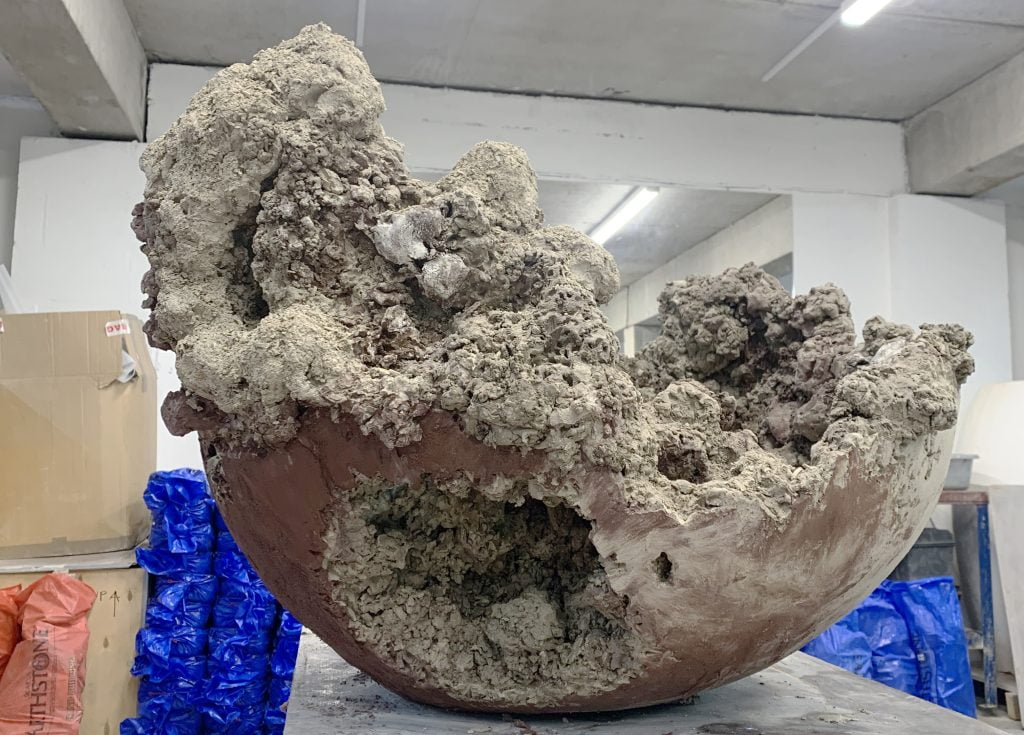
Work in progress in the studio for BCB. (Credit: Rebecca Appleby)
Court: That’s interesting to see the direct correlation like that. So, looking forward, what are you working on at the moment?
Rebecca: I was one of ten artists shortlisted for the BCB headline exhibition Award so I’m working on a body of work for that, which is called Gaia. The work produced for the exhibition must explore the full creative potential of clay for experimentation, risk-taking, activism and play, challenging the ceramics status quo. Gaia explores a long-standing interest in the notion of balancing structure and order, disorder and disarray, and referencing the Japanese aesthetic of wabi-sabi.
The current works take the shape of spheres and hemispheres. We perceive the earth as being divided at the equator. The northern and southern hemispheres or divided at the prime meridian into east & western hemispheres. My research for Gaia informs a personal interpretation of multiple themes, including a holistic view of the earth and its hemispheres exploring the concept of Gaia – everything on Earth is connected. There is also reference to cellular structure and the human brain. The grey and white matter of the cerebrum, which is divided into the left and right hemispheres by a deep longitudinal fissure.
Alongside the BCB festival I also have a solo exhibition called Matter which us on at the Burton Bideford, 30 September – 4 December.
Matter is any substance that has mass and takes up space. Earth, and everything on it, is made of matter, and so are all the stars and planets in the universe. We are intimately connected with the universe in a very practical way, to the extent that our bodies actually contain atoms that were forged in stars. In fact, most of the elements that we’re familiar with have their origins in the stars.
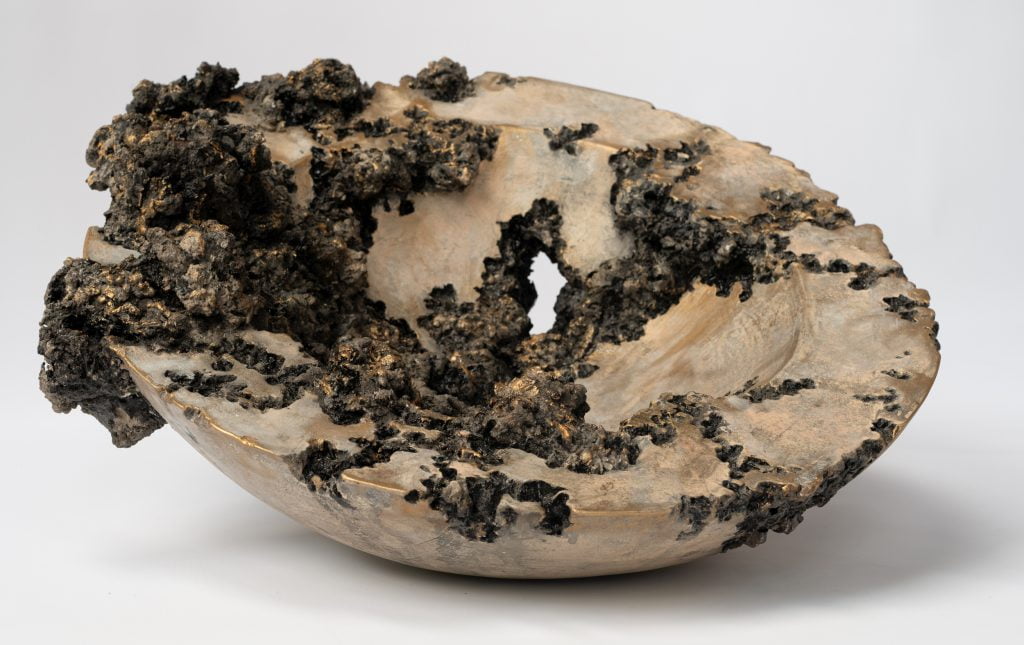
A finished work Gaia. (Credit: David Fulford)
Court: That’s remarkable and incredibly overwhelming all at once! Speaking of remarkable things, what would you say has been your career highlight to date?
Rebecca: That’s a tough one. I have had so many highlights. There have been many moments small and large that have all contributed to the overall journey. I appreciate and am grateful for all the opportunities that have come my way so far. I hope there will be more along the way.
I really like this quote: “When you accept everything, everything is beyond dimensions. The earth is not great nor a grain of sand small. In the realm of Great Activity picking up a grain of sand is the same as taking up the whole universe.”
Court: Do you have a dream project or something you would love to make happen?
Rebecca: I feel so grateful and lucky to do what I do. I am genuinely living my dream! My goal is to be able to continue my practice and continue to exhibit and sell my work.
My immediate ambition is that my sculpture will be introduced to a range of key thinkers and influencers that may not be aware of my work at present. My aspiration for the future is to gain desired private and public, national and international gallery representation and further exhibition opportunities.
Court: You are well on your way to all of that! What’s the best way for people to keep up to date with your work, upcoming exhibitions and workshops?
Rebecca: I have a website that people can look at, but by far the best way to keep up to date with work, exhibitions and workshops is my Instagram account @rebeccaappleby7 or our workshops @clayyorkshire .
Court: Thank you so much for you time today and for sharing this gorgeous space on such a glorious day!

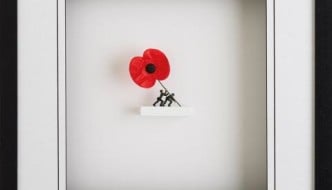
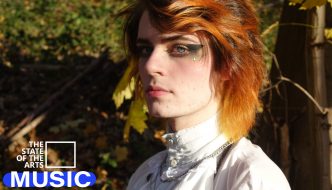
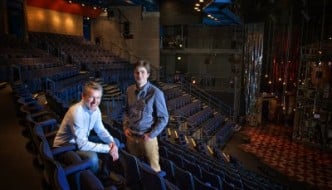
Comments